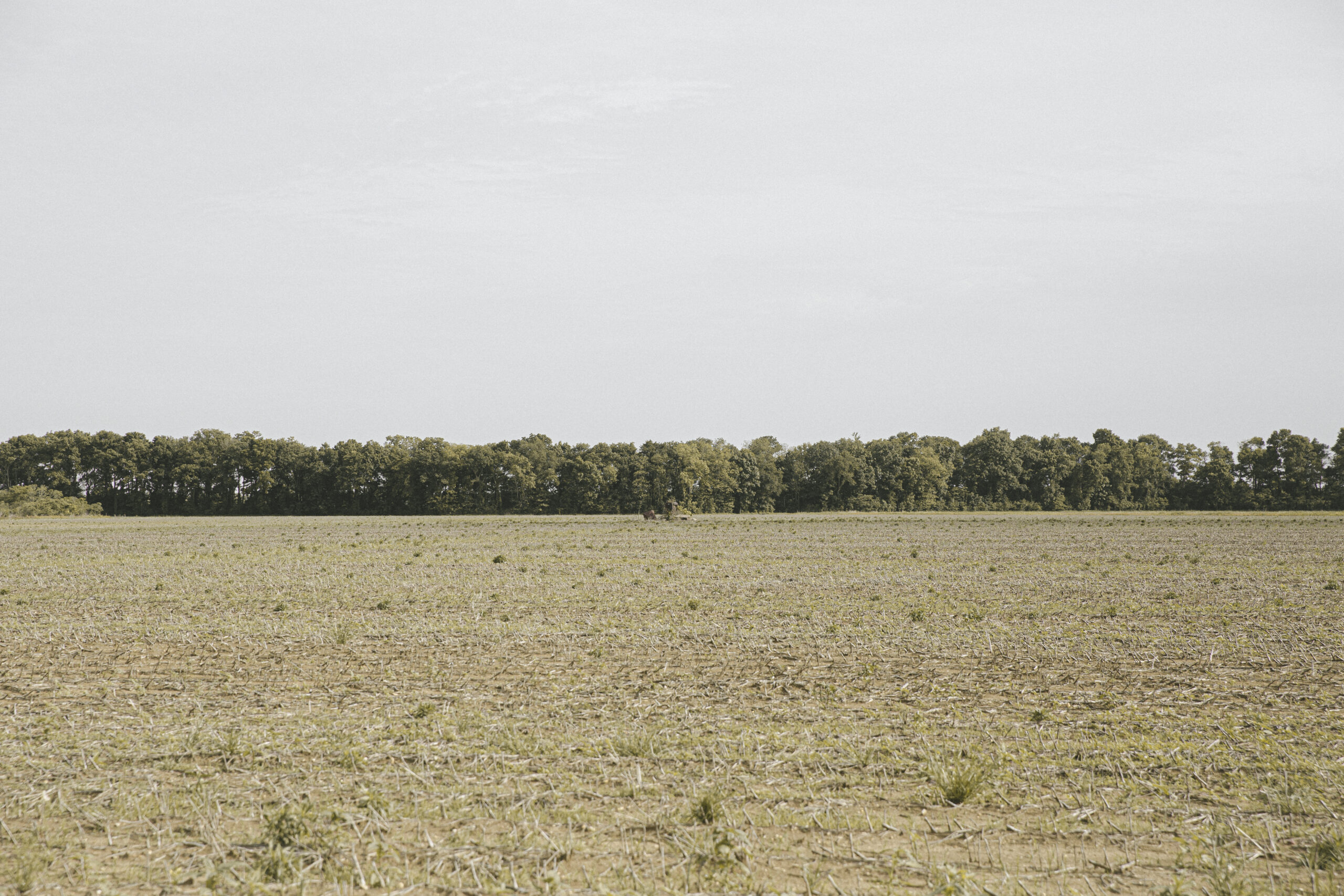
Located in southeastern Arkansas, Jerome had the shortest operational period of any of the ten War Relocation Authority camps, remaining open for just 21 months. It was notable for having the lowest rate of “yes” responses to Question 28 on the loyalty questionnaire, the lowest number of volunteers for military service, and the highest percentage of incarcerees transferred to Tule Lake Segregation Center.

The War Relocation Authority‘s master plot plan for Jerome. Courtesy of the National Archives and Records Administration.
Jerome was built on 10,000 acres of marshland in the Mississippi River Delta, a densely forested area prone to frequent flooding. The land had been largely abandoned until the War Relocation Authority acquired it in 1942.
Construction began that summer but dragged on for months, continuing even after the first incarcerees arrived in October. Many families were forced to move into unfinished barracks, some of which lacked windows. Poor drainage and heavy rainfall turned the camp into a muddy swamp, with incarcerees trekking more than half a mile through ankle-deep mud just to reach the mess hall. Infrastructure failures only worsened conditions—improperly sealed pipes led to contaminated drinking water, contributing to outbreaks of dysentery and other illnesses.
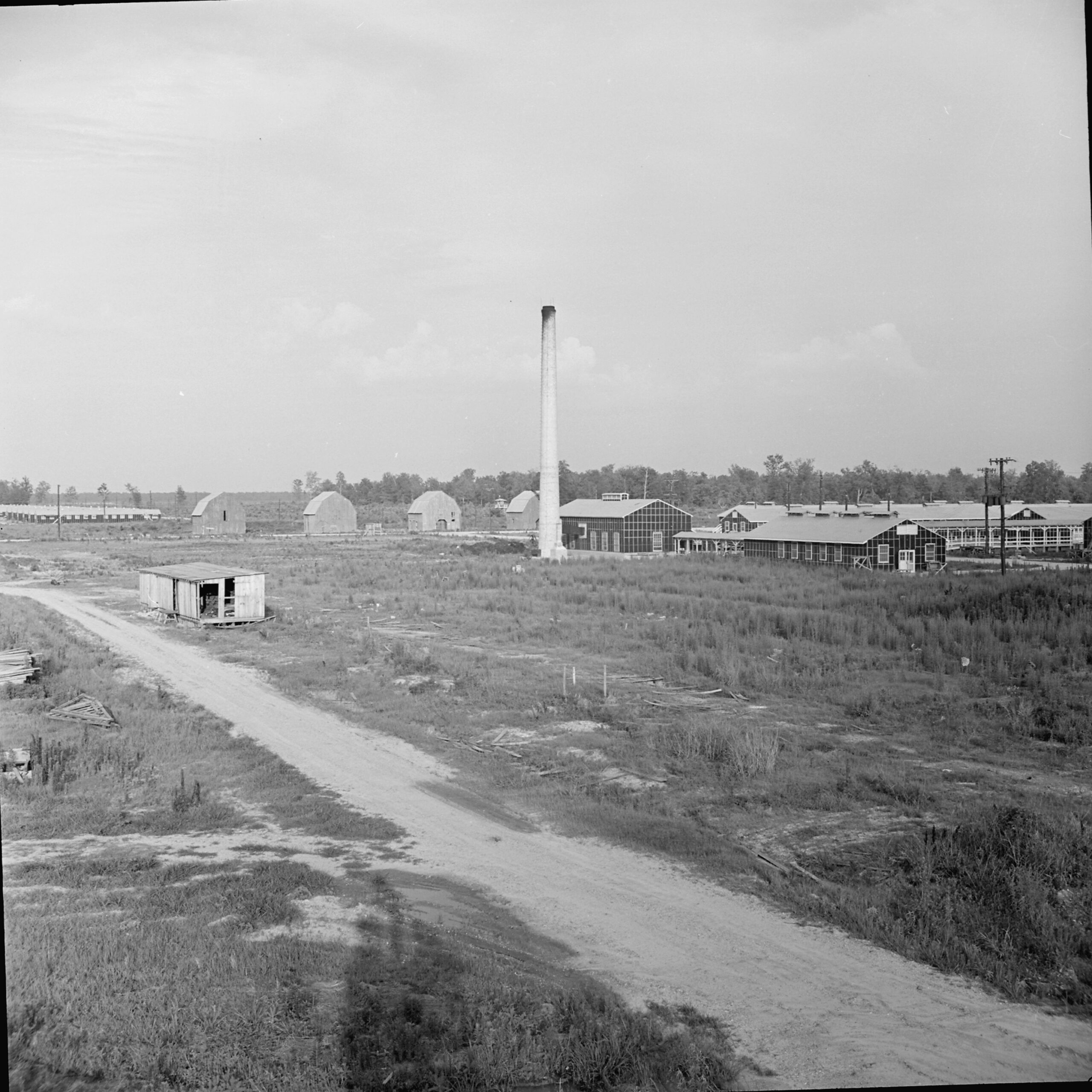
A smoke stack at Jerome concentration camp photographed shortly before the camp’s closing. June 22, 1944. Courtesy of National Archives and Records Administration.
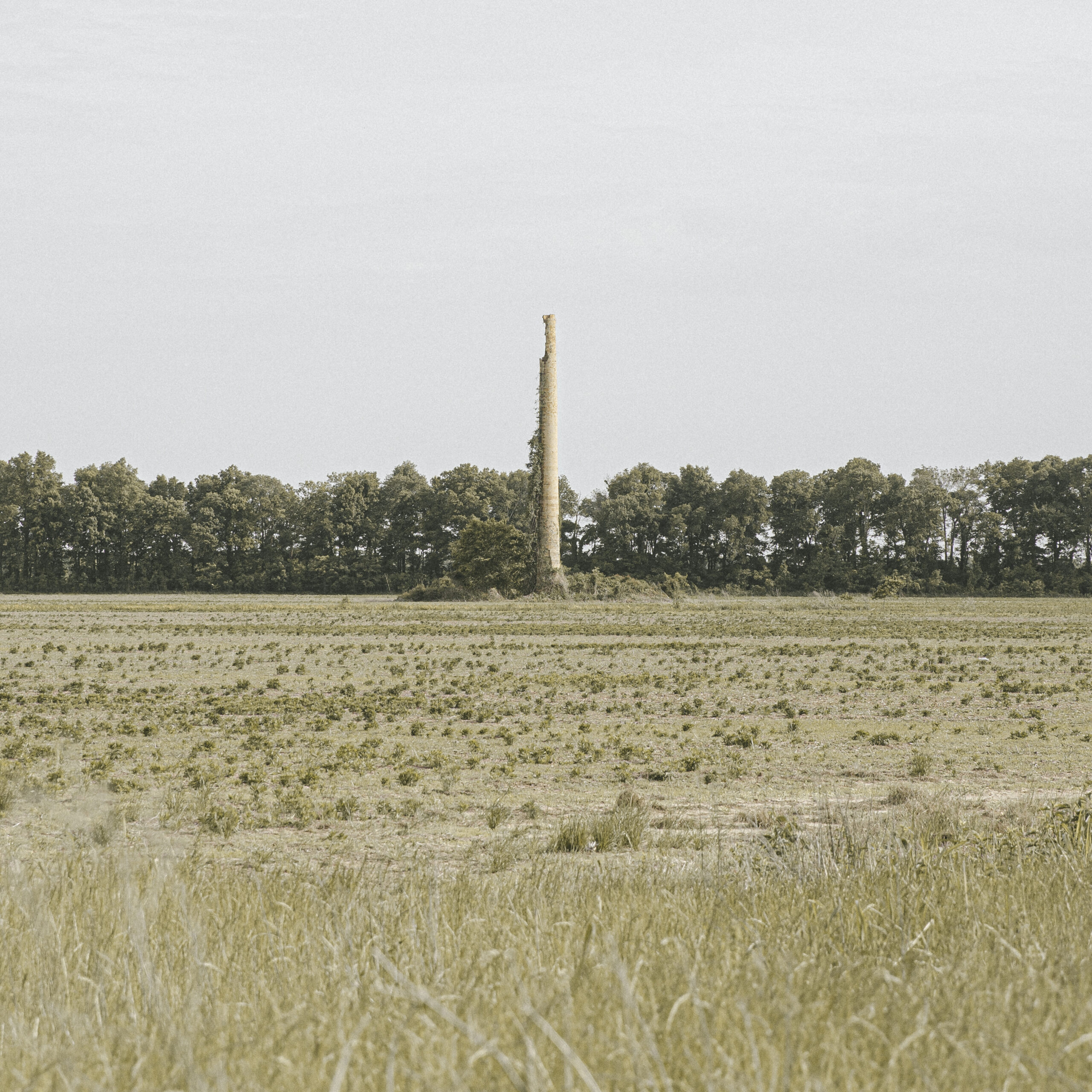
Most of the land that the Jerome concentration camp was once on is now owned by the Ellington family, who purchased the land in the 1950s for farming. Few structures remain except for a smoke stack that was once attached to the hospital building. May 4, 2023.
The standard 20′ x 120′ barracks were divided into six family units, each allocated a bed per person, a single electrical outlet, and a wood-burning stove for heat. However, due to construction delays, some families did not receive stoves until mid-December, leaving them to endure the bitter cold with little protection. To keep warm, incarcerees were told to chop firewood from the surrounding forests, a physically demanding and dangerous task, particularly for those with no experience in lumber work.
Tensions between incarcerees and camp administrators steadily increased. In April 1943, a dispute between incarceree woodcutters and a white supervisor led to the dismissal of two workers, triggering a strike by 30 out of 34 mechanics and shop workers. That fall, a trailer carrying woodcutters overturned, killing one person and injuring 20 others, sparking discussions of a general strike. Although the strike never materialized, the growing unrest ultimately led to the resignation of the camp director.
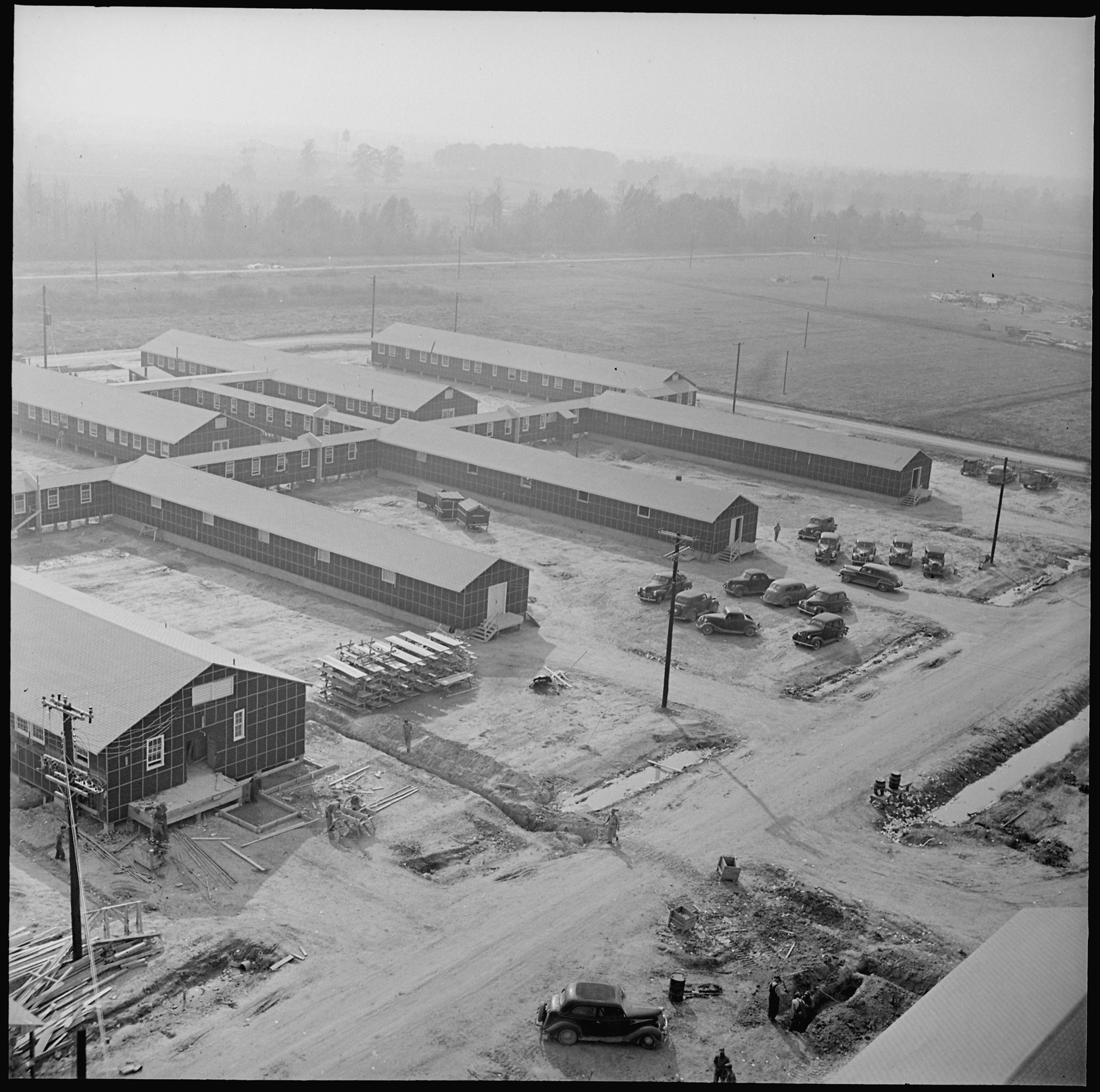
An aerial view of the Jerome concentration camp. November 17, 1942. Source: ddr-densho-37-630, Courtesy of the Densho Digital Repository, National Archives and Records Administration Collection
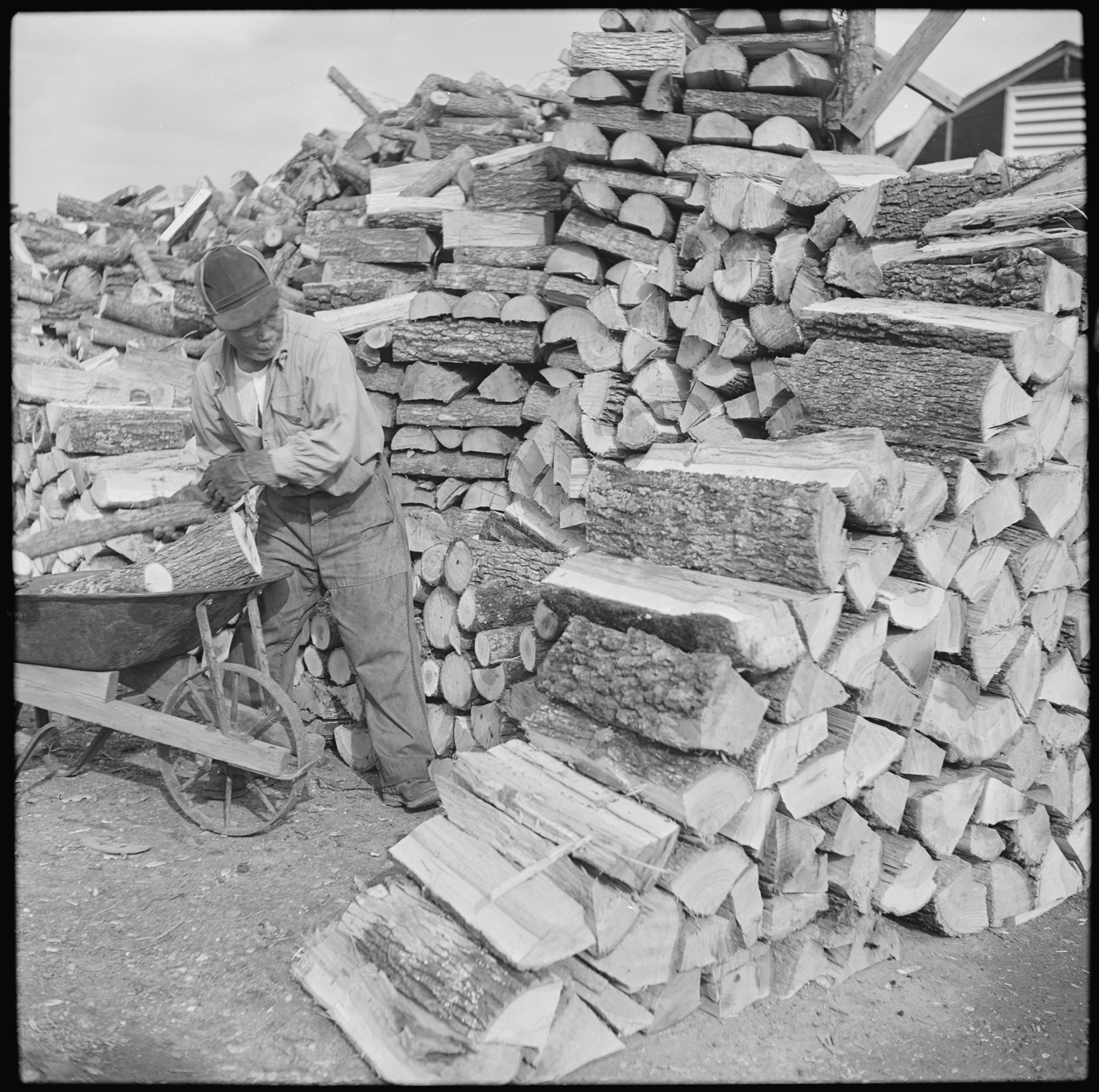
An incarceree at Jerome chopping wood. December 7, 1943. Source: ddr-densho-37-615, Courtesy of the Densho Digital Repository, National Archives and Records Administration Collection
Jerome received over 800 incarcerees from Hawai‘i, the largest group sent to any War Relocation Authority concentration camp. While Japanese Americans comprised nearly 37% of Hawai‘i’s population, the islands were excluded from Executive Order 9066 and subjected only to “selective” incarceration. Still, U.S. military forces arrested approximately 2,000 residents, many of whom were forcibly sent to mainland camps like Jerome.
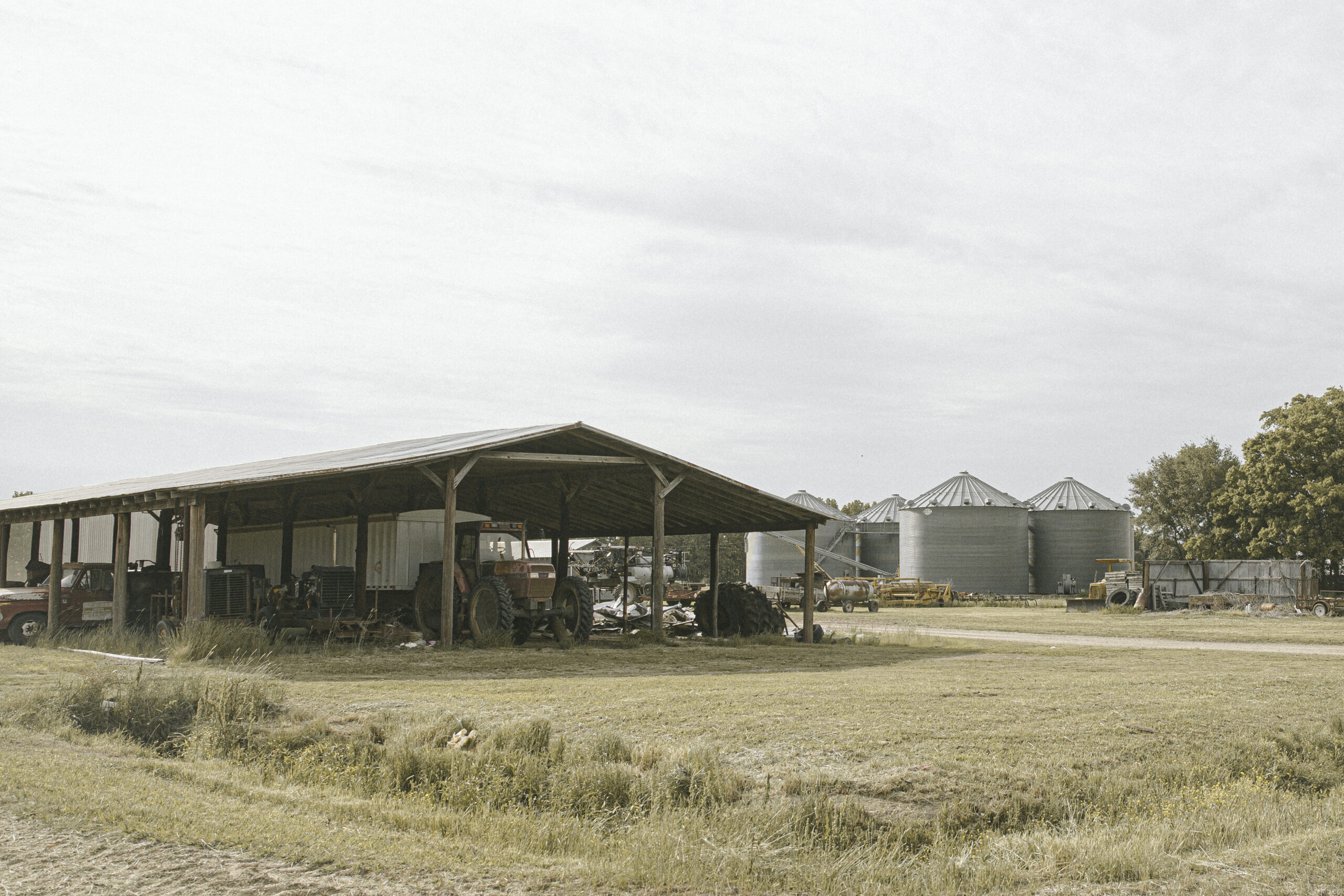
Although the land is now primarily used for farming, the Ellington family continues to invite former incarcerees to help locate where their barrack was. The late John Ellington grew up nearby the Jerome concentration camp and often played with the incarcerated children.
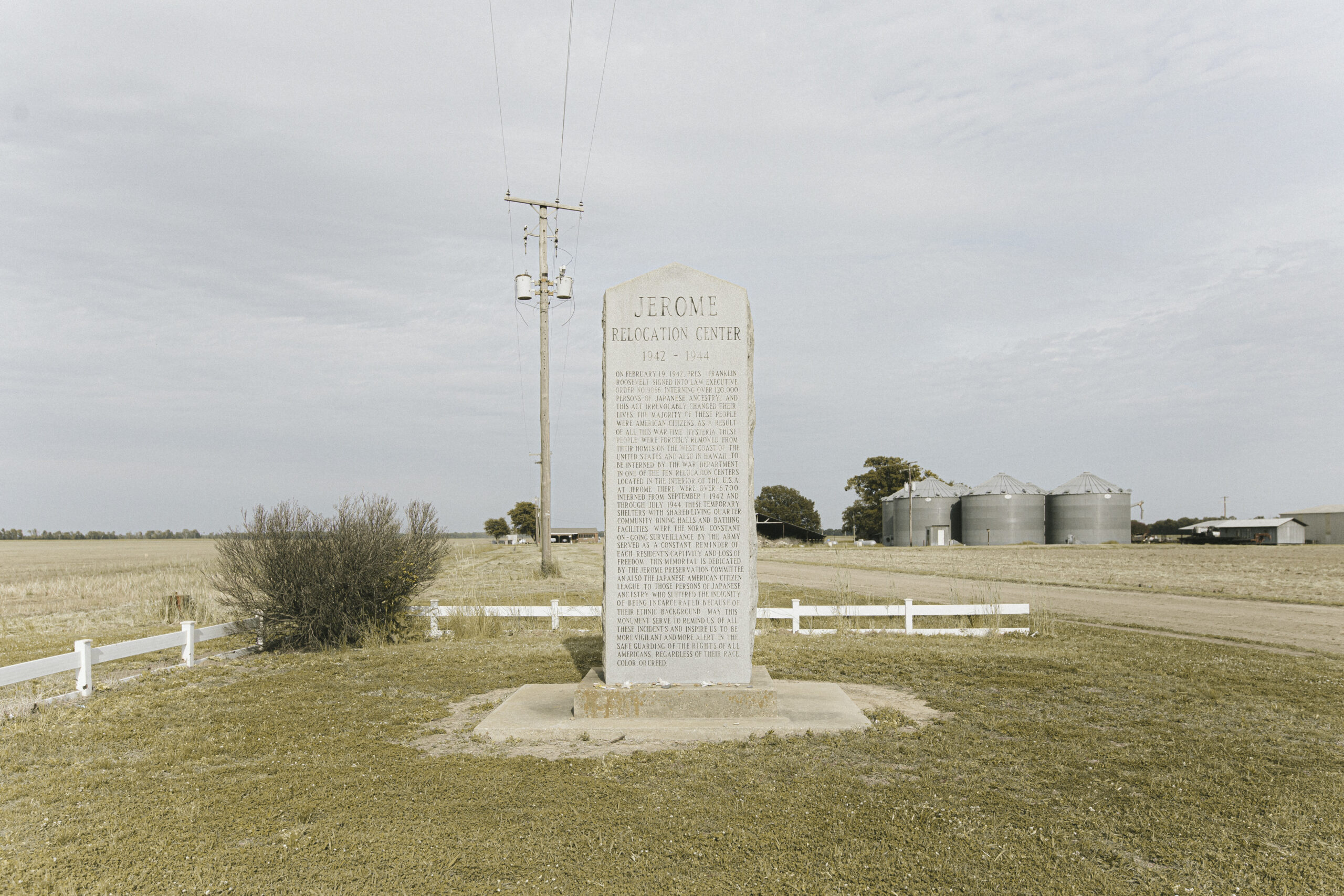
In an effort to preserve the history of the former concentration camp, John Ellington and former incarceree George Sakaguchi raised funds to build a stone monument to memorialize the site, which was completed in 1992.
Why is Jerome significant?
Jerome recorded the lowest rate of “yes” responses to Question 28 on the loyalty questionnaire, the highest number of transfers to Tule Lake Segregation Center, and the lowest rate of volunteers for the U.S. military.
Miscommunication and disorganization plagued the military registration process at Jerome. Registration officially began on February 9, 1943, but confusion among camp administrators delayed progress for over a month. By February 20, only half of Jerome’s incarcerees had completed registration, and approximately 600 Kibei refused to register altogether.
Dissent within the camp continued to grow. On March 2, 1943, administrators warned that non-compliance could result in jail time, escalating tensions further. Ultimately, one in four incarcerees answered “no” to Question 28, in stark contrast to the 9% average across all War Relocation Authority camps. Among male U.S. citizens, the rate was even higher—nearly 30% refused to affirm their loyalty.
Concerned about potential unrest, camp administrators urged the War Relocation Authority to establish a segregation program to separate so-called “troublemakers” from the rest of the population. Beginning in fall 1943, individuals labeled “disloyal” were transferred to Tule Lake Segregation Center. By the time Jerome closed, only 37 men had volunteered for military service—the lowest number of any War Relocation Authority concentration camp.
Please note: These photographs were taken with permission and permits where required, in accordance with site guidelines. Visitors must respect and follow all visitation protocols.
This historical overview is informed by research from the Densho Encyclopedia (accessed in 2023), National Park Service (accessed in 2023), and interviews conducted during a visit to the camp in 2023.
